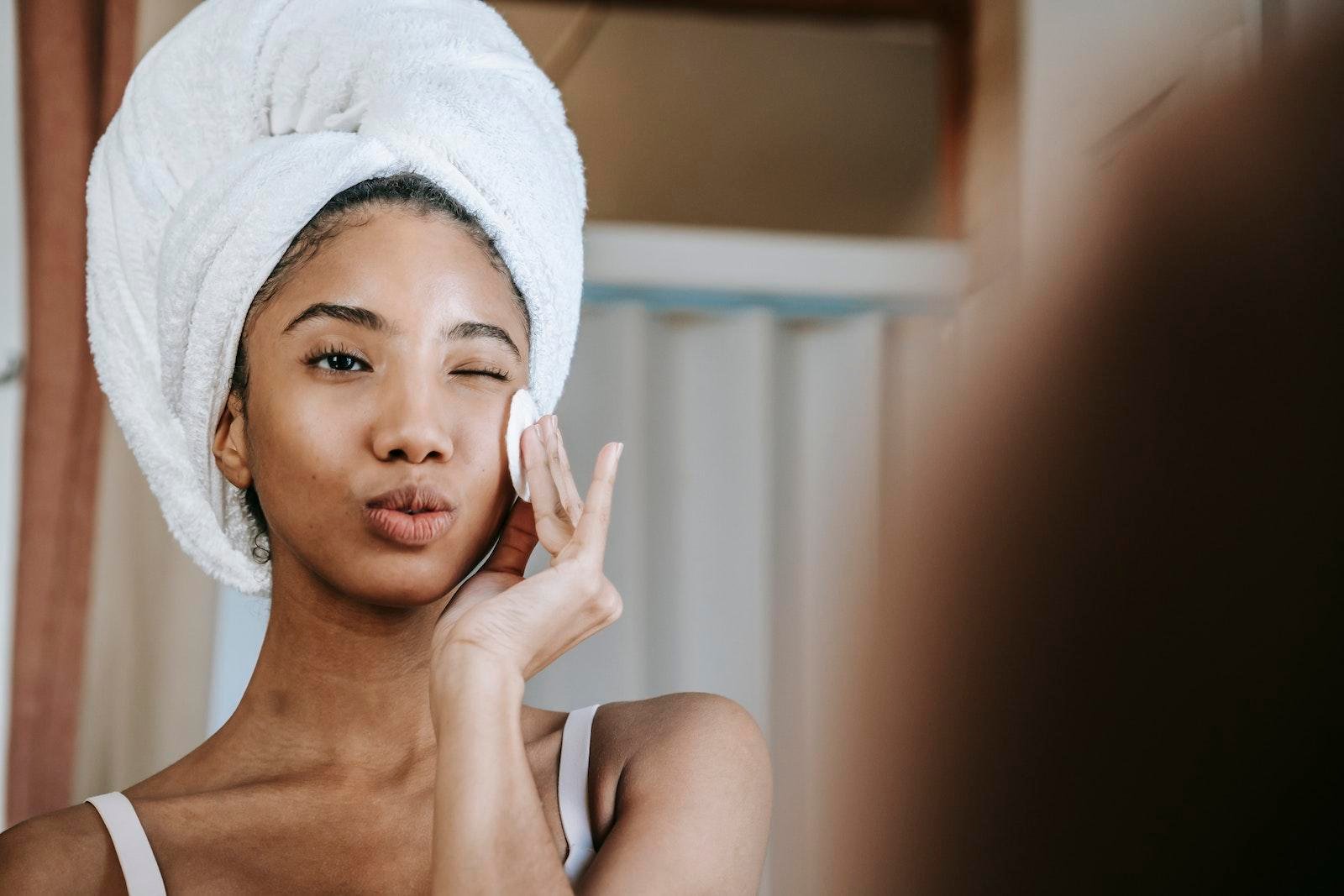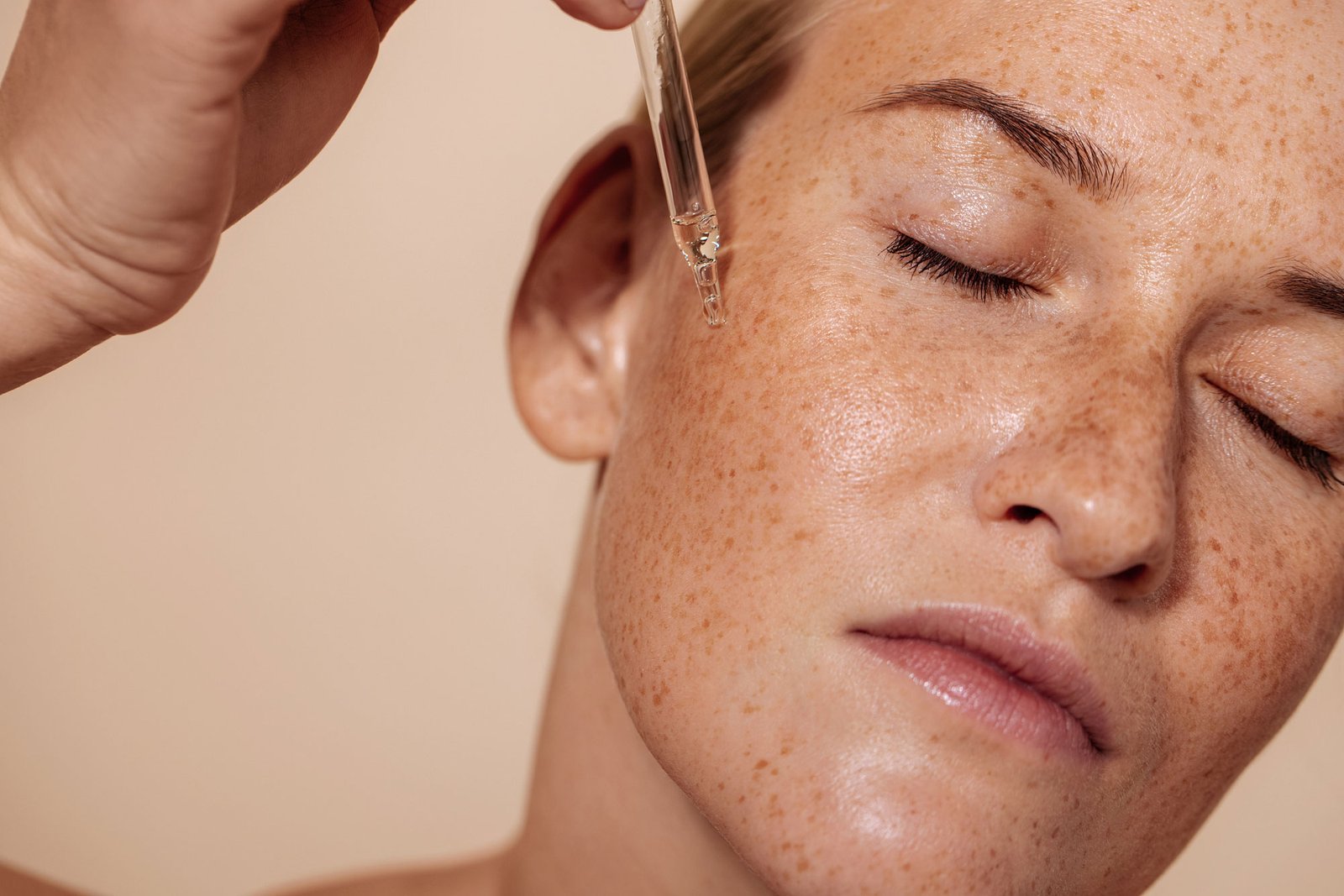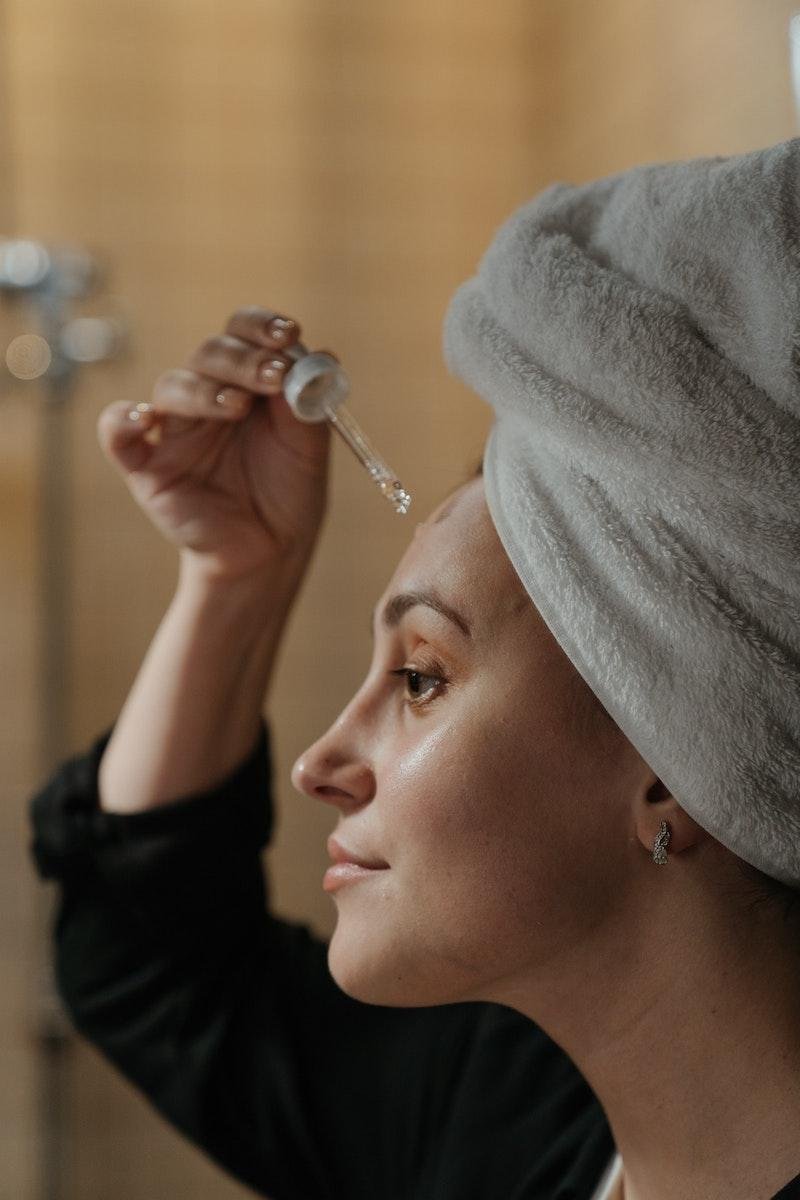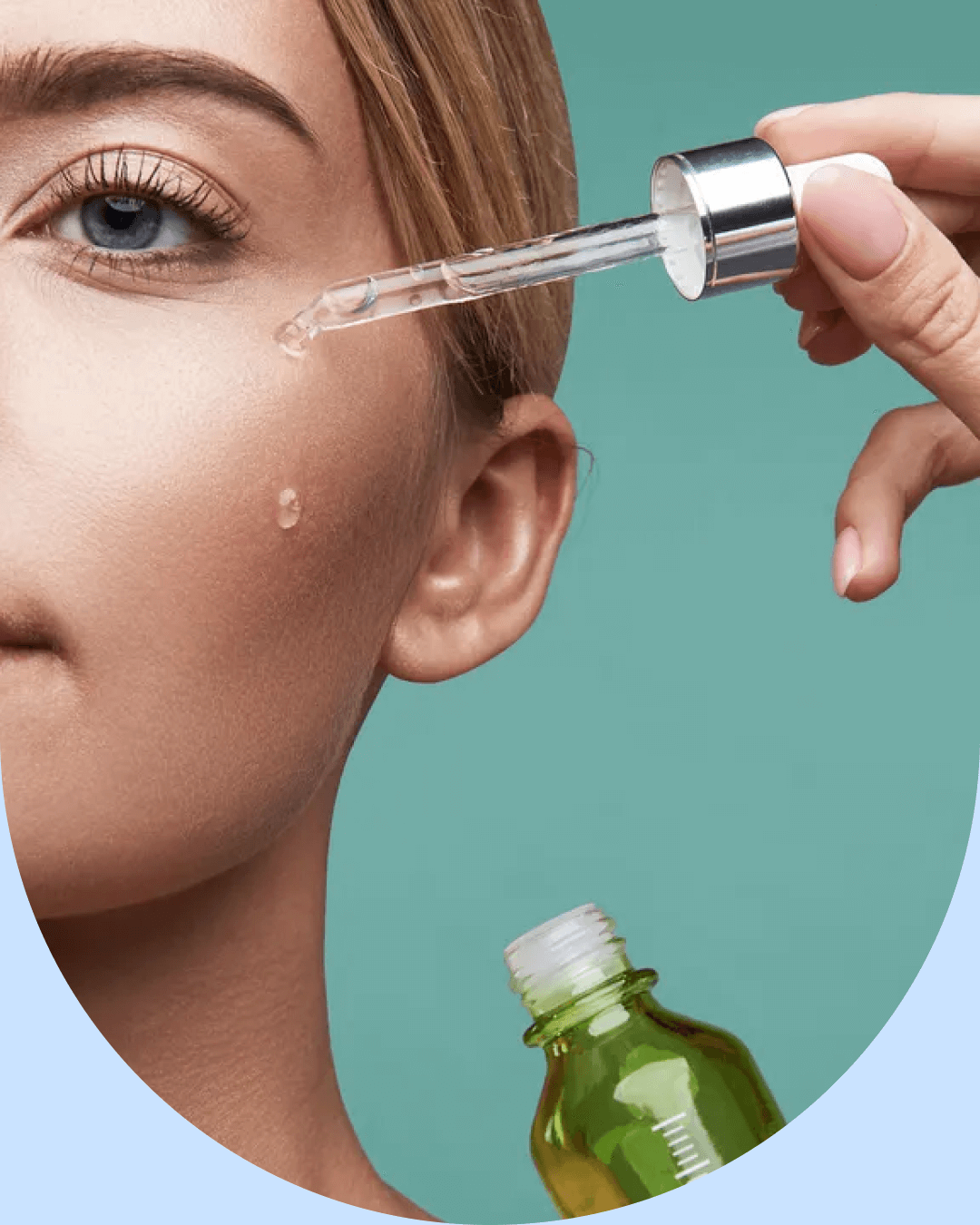Slugging has recently gone viral on social media for its claims to provide deep hydration, protect the skin’s barrier, and promote a healthy, glowing complexion. But, is slugging as beneficial as TikTok claims? Below, we uncover the secrets behind this controversial skincare trend, discuss its benefits and any potential drawbacks, and explore different products and alternatives to elevate your slugging experience. Whether you’re a skincare enthusiast or simply curious about the latest beauty techniques, read more about the slimy world of slugging below.
What is Slugging?
Slugging in skincare refers to the application of an occlusive product to the skin as the final step in your routine before bed. This technique originated in Korean skincare and has since gone viral on TikTok. Typically, the most popular products used in slugging are pure petroleum jelly, like Vaseline, or petroleum jelly-based products.
The term “slugging” refers to the shiny, slimy appearance of the skin when coated with the occlusive moisturizer, resembling a slug. It involves applying a thick occlusive substance, such as petroleum jelly or a similar occlusive moisturizer, as the final step in your skincare routine. Its main purpose is to create a barrier on the skin’s surface. By creating a barrier, the occlusive locks in hydration and maximizes the benefits of the skincare products applied underneath. Moreover, it supports the skin’s natural lipid barrier, which helps regulate hydration, bind cells together, and protect against irritants.
Slugging in Skincare Do’s and Don’ts
It’s important to remember that slugging is not for everyone, and there are some tips and tricks to get the most out of slugging your skin and make sure it’s working for you.
When slugging…
Do:
- Prioritize hydration and moisture: The key aspect of slugging is maintaining and enhancing skin hydration. It’s crucial to incorporate hydrating and moisturizing products into your skincare routine before applying the occlusive moisturizer.
- Layer gentle, moisturizing products underneath: To maximize the benefits of slugging, layer your skincare products strategically. Start with several layers of light toners containing hyaluronic acid, followed by soothing essences, serums, and lightweight moisturizers. This creates a nourishing base for the occlusive layer and promotes deep hydration.
- Try slugging if you have dry, irritated, or sensitive skin: Slugging is particularly well-suited for individuals with dry, flaky, or sensitive skin types. It helps to lock in moisture, soothe irritation, and provide a protective barrier for delicate skin.
Don’t:
- Use products containing retinol, AHAs, BHAs, or vitamin C: Avoid applying products with active ingredients like retinol (vitamin A), AHAs (alpha hydroxy acids), BHAs (beta hydroxy acids), or vitamin C underneath the occlusive moisturizer. The occlusive layer used in slugging can prolong the contact time of these active ingredients on your skin, leading to irritation.
- Be scared of petroleum jelly: While petroleum jelly is a common occlusive moisturizer used in slugging, some people may have concerns about its safety or comedogenic properties. However, petroleum jelly is generally considered safe for most individuals and has a low risk of causing breakouts or irritation. If you have specific concerns, you can try alternative occlusive moisturizers like plant-based oils or balms.
- Try slugging if you have oily or acne-prone skin: Slugging may not be the best approach for those with oily or acne-prone skin. The occlusive nature of the moisturizer can potentially trap excess oil and clog pores, leading to breakouts. Instead, focus on lightweight, non-comedogenic moisturizers and products targeted towards controlling oil production and treating acne.
Best Products for Slugging Your Face
As mentioned, slugging is typically done with a petroleum jelly-based occlusive layer. However, there are some other occlusive ingredients commonly used in slugging that can provide similar benefits. Mineral oil, a lightweight and non-comedogenic ingredient, is often used as an occlusive to prevent transepidermal water loss and lock in moisture. Lanolin, a natural wax derived from sheep’s wool, is another occlusive ingredient known for its emollient and protective properties.
Some of the most commonly used products for slugging include:
- Vaseline Petroleum Jelly
- Aquaphor Healing Ointment
- Vanicream Moisturizing Ointment
- CeraVe Healing Ointment
 Slugging Skincare Routine
Slugging Skincare Routine
To maximize the benefits of slugging, it is important to use healing, hydrating, and calming products before applying the occlusive layer. This helps to ensure that these beneficial ingredients penetrate the skin effectively and work throughout the night.
However, it is crucial to avoid using certain ingredients like retinol or chemical exfoliants underneath. When these ingredients are trapped between the skin and the occlusive barrier, they can cause irritation and counteract the intended effects of slugging.
By following a hydrating and healing skincare routine prior to slugging, you can ensure that the products deeply nourish and hydrate your skin overnight. This can result in a plump, bouncy, and more youthful-looking complexion when you wake up in the morning.
A slugging skincare routine should include:
- Cleansing: Start by cleansing your face with a hydrating cleanser, such as Cerave Hydrating Facial Cleanser. Look for ingredients like hyaluronic acid, ceramides, or glycerin that help draw water into the skin and keep it soft.
- Toning: Opt for a hydrating toner like Hada Labo Gokujyn Hyaluronic Acid Toner. Avoid toners with active ingredients like retinol, AHAs, BHAs, or vitamin C. Apply the toner to damp skin for better absorption.
- Essence & Serums: Incorporate essences and serums into your slugging routine to provide additional nourishment and healing properties to the skin. If you have dry, acne-prone, or sensitive skin, consider using Missha Time Revolution Artemisia Treatment Essence, which contains 100% fermented mugwort known for its soothing properties.
- Moisturize: Apply a thin layer of a gentle moisturizer to your skin, either your regular daily moisturizer or a moisturizer with fewer active ingredients like Simple Hydrating Light Moisturizer. Avoid moisturizers with too many actives to prevent potential interactions.
- Slugging: Once your moisturizer has absorbed into the skin, apply a small amount of an occlusive layer to seal in the moisture. Focus on dry areas such as the nose, chin, and around the eyes. The amount of occlusive product applied depends on personal preference, ranging from a thick layer to a thin one.
- Sleeping: Leave the occlusive layer on your face and go to sleep. Consider placing a clean towel over your pillow to protect your bed sheets from potential staining caused by petroleum jelly.
- Morning Routine: In the morning, wash your face as usual to remove the occlusive layer, and continue with your regular skincare routine.
Slugging in Skincare Benefits
Slugging offers excellent skincare benefits for those seeking to soften, smooth, and plump their skin. It is particularly beneficial for individuals with dry, dehydrated skin, a compromised skin barrier, or those experiencing the drying effects of oral Accutane or topical Tretinoin treatments.
The benefits of slugging include:
- Hydration: By applying an occlusive moisturizer, such as petroleum jelly or a similar product, as the final step in your skincare routine, you create a barrier that helps to seal in moisture. This prevents transepidermal water loss, keeping the skin hydrated and preventing dryness and dehydration.
- Barrier protection: The occlusive layer formed by slugging acts as a protective barrier on the surface of the skin. It helps to shield the skin from external factors that can cause damage and moisture loss, such as pollution, harsh weather conditions (like wind and cold), and irritants. By creating this protective layer, slugging helps to maintain the skin’s natural moisture balance and lipid barrier.
- Skin softening: Slugging can contribute to softer and smoother skin. The occlusive moisturizer used in slugging locks in moisture and softens the skin’s texture. It can be particularly beneficial for areas prone to roughness or dryness. Regular slugging can help alleviate dry patches and promote a more supple and smooth skin appearance.
- Healing properties: Slugging can aid in the healing of minor skin irritations. The occlusive layer helps to create an environment that supports the skin’s natural healing process. It can be beneficial for conditions such as flakiness, redness, or irritation. By sealing in moisture and providing a protective barrier, slugging allows the skin to repair itself more effectively and can help alleviate discomfort.
- Soothing and calming effect: Slugging can have a soothing and calming effect on the skin, especially for those with sensitive or irritated skin conditions. The occlusive layer helps to reduce inflammation, redness, and discomfort, promoting a more balanced and comfortable skin.
- Enhanced product absorption: By creating an occlusive layer on the skin, slugging helps to improve the absorption of other skincare products applied underneath. It allows the healing and hydrating ingredients in serums, moisturizers, or treatments to penetrate more effectively and deliver their benefits to the skin.
Disadvantages to Slugging
It’s important to note that slugging may not be suitable for everyone, especially those with oily or acne-prone skin. While common scientific consensus says that petroleum jelly does not clog pores, it can potentially trap bacteria and oil in the skin, leading to breakouts. There is also some risk of reddening of the skin, particularly in people with rosacea, as the petroleum jelly can trap heat. However, the redness should go away after rinsing the occlusive off in the morning.
In addition, as noted above, it’s important to avoid certain irritating ingredients when slugging. Due to its occlusive nature, slugging increases the intensity of the products underneath it as those products can’t naturally evaporate from the skin overnight. While this is the goal for hydrating and healing ingredients, it’s best to avoid any products with chemical exfoliants, retinols, or vitamin c that can cause skin sensitivity and irritation.
Alternatives to Slugging with Vaseline
While petroleum jelly, mineral oil, and lanolin, are typically used for slugging, there are some alternatives. There is little evidence that these common ingredients are any cause for concern, as all three have a long history in skincare.
However, some people prefer to use alternatives for a more natural approach to slugging – whether due to health concerns, environment concerns, or simply because they dislike the texture of petroleum jelly on the skin. Instead they choose to use products with plant-based oils or waxes like jojoba or coconut oil, shea butter, beeswax, or vegetable glycerin.
Below, you will find some popular alternatives to slugging with Vaseline, that don’t contain petroleum jelly, mineral oils, or lanolin.
La Roche Posay Cicaplast B5 Baume
La Roche-Posay Cicaplast B5 Baume is a skincare product that offers relief and protection for various skin concerns. It is a popular choice for petroleum-free slugging.
It helps soothe and moisturize the skin with the inclusion of Vitamin B5 (Panthenol). Shea Butter, sustainably sourced from Burkina Faso, restores the skin’s hydrolipidic film and provides a soothing effect. Additionally, Madecassoside, derived from the Centella Asiatica plant, offers nourishing properties. These ingredients work together to restore skin comfort, hydration, and protect against dryness, making the product suitable for irritated and sensitive skin.
Shop La Roche-Posay Cicaplast Baume Here
Waxelene Multi-Purpose Ointment
Waxelene is a sustainable alternative to Vaseline. It contains beneficial, petroleum-free ingredients like beeswax, vitamin E oil, rosemary oil, and soy oil.
It is organic, biodegradable, and free of petroleum derivatives, parabens, and artificial ingredients. The packaging is environmentally friendly and 100% recyclable, with the option to purchase a reusable glass jar. This gentle and effective multi-purpose ointment is suitable for various skin conditions like eczema, psoriasis, and diaper rash.
It’s suitable for sensitive skin, as it is hypoallergenic and non-comedogenic. This makes it a popular product for slugging with sensitive skin.
Shop Waxelene Multi-Purpose Ointment Here
Pipette Baby Balm
Pipette Baby Balm is a multipurpose balm. It contains skin-identical squalane, jojoba oil, berry-derived wax, pomegranate sterols (antioxidants), and Tocopherol (vitamin E).
It is gentle enough for babies, and an alternative for slugging. This extra-rich balm provides ultimate hydration, calming, and nourishing benefits, and is specifically formulated for sensitive and dry baby skin. The proprietary sugarcane-derived squalane in the formula is highly moisturizing and suitable for delicate skin.
Nucifera The Balm
Nucifera The Balm is a versatile multi-purpose balm that claims to help improve skin on a cellular level.
It contains nutrient-dense plant-based butters and oils like coconut oil, shea butter, olive oil, avocado oil, and jojoba oil. These ingredients provide deep hydration, moisturization, and nourishment to the skin and hair. The balm can be used for multiple purposes, including slugging. It is made with organic and plant-based ingredients, free from harmful chemicals, synthetic fragrances, and preservatives.
DIY Slugging Balm
If you have specific skincare concerns, you may want to try making your own vaseline-free DIY balm for slugging.
A basic homemade slugging balm includes:
- 2 tablespoons beeswax pellets
- ¼ cup coconut oil
- 2 tablespoons shea butter
- Your favorite essential oils (optional)
Slowly stir the beeswax, coconut oil, and shea butter in a double boiler over low heat until fully melted. Once melted, add 8-12 drops of optional essential oils. Pour the melted mixture into a sterilized, glass container and let cool.
This DIY balm is meant to be a guide, and you should always patch test any product before application. Some people might find coconut oil can cause breakouts. You can try alternatives like cocoa butter or plant-based waxes, but you will find best results with an ingredient that remains solid at room temperature.




